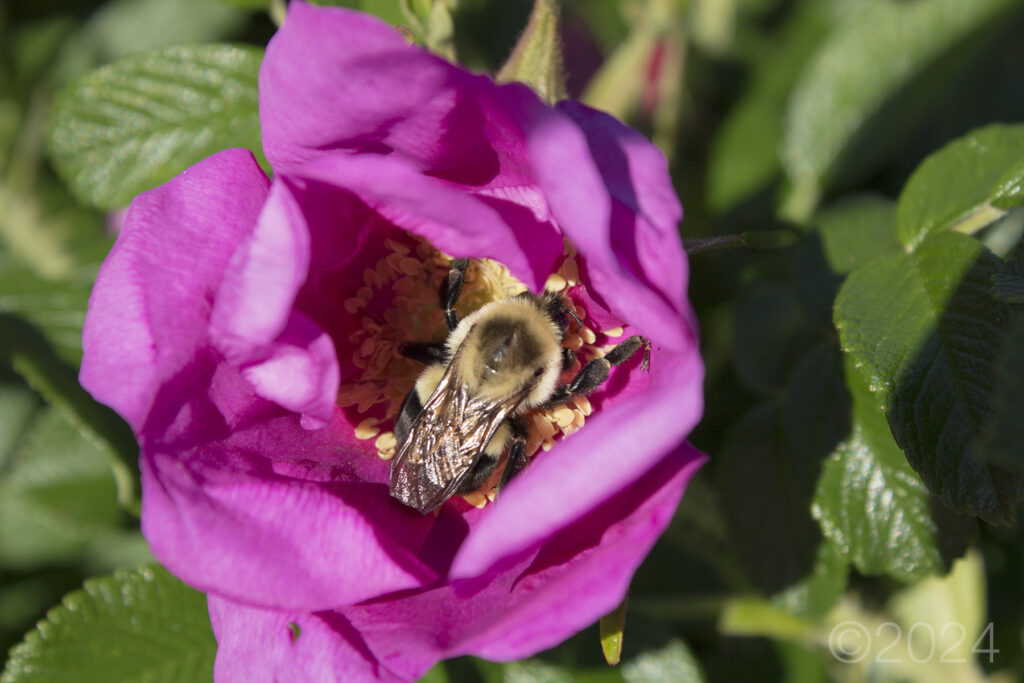
Wisconsin is home to about 20 different species of bumble bees. Their role in pollinating flowering plants is crucial—not just for the natural world but also for human agriculture.
US bee populations have steadily declined over the past few decades. The importance of bees cannot be overstated, as they are responsible for pollinating 80% of flowering plants.
Currently, at the Van der Brohe Arboretum, many variety of bees can be seen “buzzing” in and around the fragrant rose bushes. An interesting note is to see how the bumble bees apply vibrations to the roses, causing release of tightly-packed pollen. The bees use their thoracic (flight) muscles to generate these vibrations.
Queen bees, like the one in this photo, feed on nectar which provides them with much needed energy, whilst pollen will give her protein. If the queen bumble bee is carrying pollen loads on her legs, it is a sign that the establishment of her colony is now underway.
Many insects are pollinators, including other bees, house flies and even ants, but did you know that many plants, including tomatoes, blueberries, and cranberries, rely on our “buzzing bees” as the primary method of pollination? Studies have shown that introducing buzzing bees to these crops significantly increases yield.
How can you help to save our pollinators?
Plant natives such as perennial flowers, grasses, trees and shrubs in your gardens. Plants that are native to Manitowoc County provide pollinators with pollen, nectar and suitable habitat. And, as we know from visits to the Arboretum, native flowers are beautiful while in bloom.
— ARTICLE & PHOTO COURTESY OF A GUEST CONTRIBUTOR